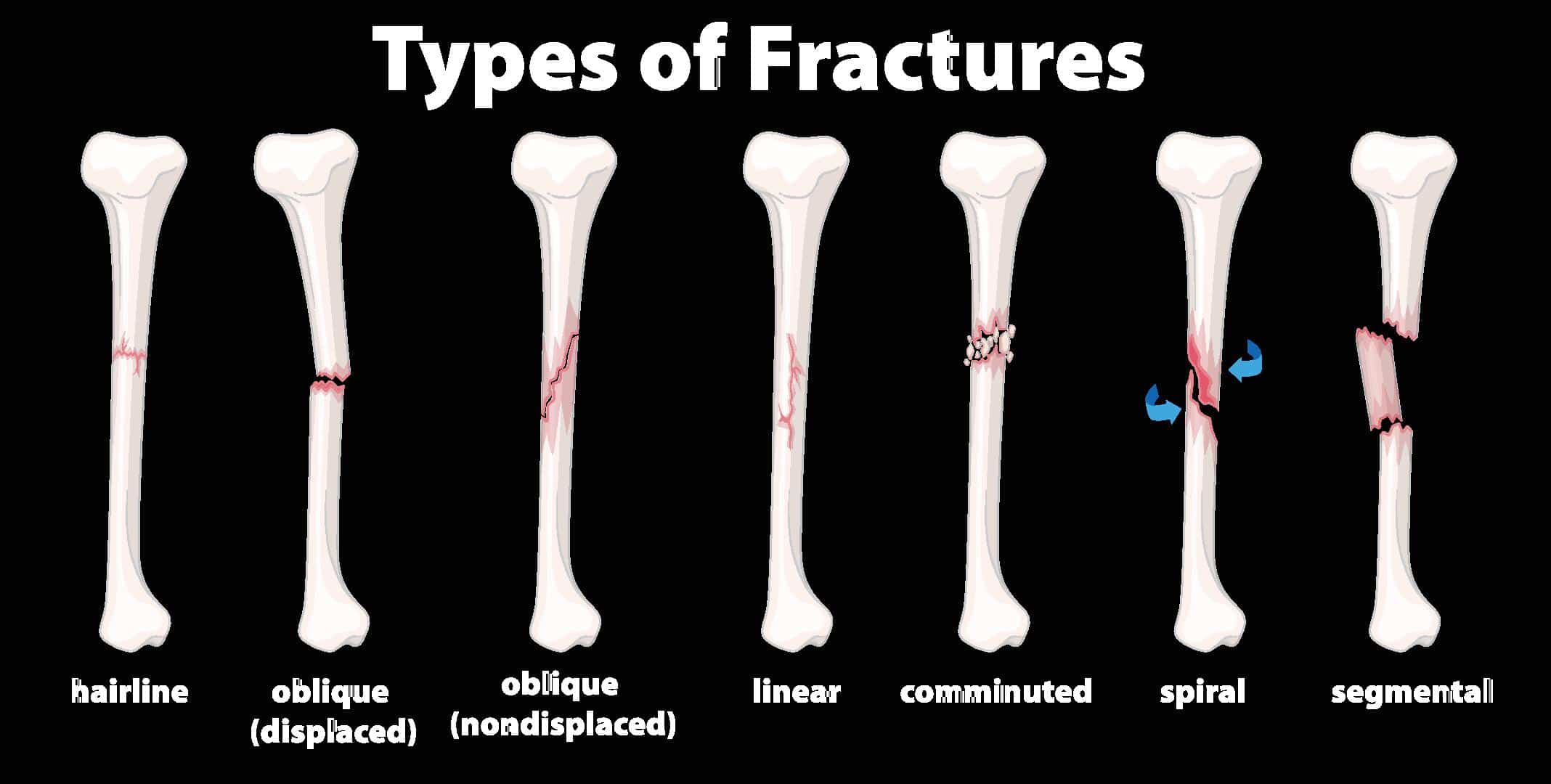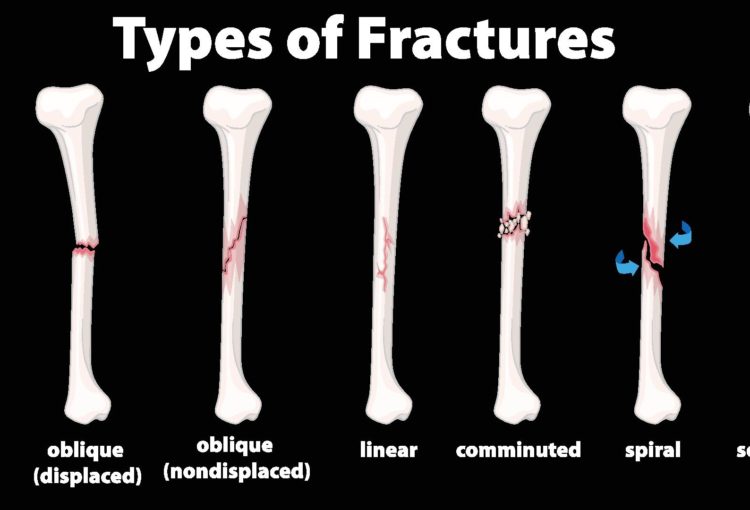Types of Bone Fractures

Bone fractures are a relatively common type of orthopedic injury and can occur whilst performing sports or other physical activities, or commonly, through falls or accidents. It is important to be aware of what type of fracture you may have sustained because this will help you determine what kind of assistance and treatment you need. Read on to learn about the different types of fractures, their causes, and how to prevent them.
What is a Bone Fracture?
A fracture refers to a broken bone. Bones can either completely fracture or can be partially fractured in various ways, mostly dependent on how the accident occurred in the first place.
Fractures are extremely painful. Aside from an obvious trauma experienced at the site of the break, you may also experience symptoms such as swelling, bruising, protrusions, and being unable to move or bear weight on the affected area.
Bones can break in various ways, and each of these ways carries its own set of symptoms and risks. Fundamentally speaking, a closed fracture (where the bone has not dislodged and is not out of place) is a lot less serious than an open fracture (where the bone may have shattered into several pieces or may be protruding from the wound), owing to an increased risk of internal tissue disruption and infection. A closed fracture will require a very different treatment to that which would be applied to an open fracture.
Categories of Bone Fractures
Bone fractures can be split into four main categories:
Displaced Fracture
This is where bone snaps into two or more pieces, and these pieces are not aligned with each other.
Non-Displaced Fracture
In this fracture, the bone can crack or break either partially or completely, but it maintains the correct alignment and does not shift.
Closed Fracture
This is where a bone breaks but does not result in an open wound in the skin or puncturing of the skin with the broken bone.
Open Fracture
In this case, the fracture causes the broken bone to poke through the skin. This category of fracture is serious because it leaves the bone vulnerable to a deep bone infection.
Types of Fractures
From these four larger categories, we can identify various types of fractures listed below.
Transverse Fracture
This fracture is a straight break that runs completely across the bone.
Spiral Fracture
With this type of fracture, at least one portion of the broken bone becomes twisted in the process of the break.
Greenstick Fracture
This is a partial fracture where the bone fractures partially on one side but doesn’t completely break through, rather resulting in a bend.
Stress Fracture
This type of fracture occurs with repeated strain on a particular bone, which can eventually result in bone breaking. This type of fracture is often found in athletes who repeatedly use a particular body part.
Compression Fracture
Also known as a crush fracture, this often takes place in the spine, where there is slightly softer bone tissue. This is where a compressed area, such as the spine, gets fractured. Conditions that weaken bones, such as osteoporosis, increase the likelihood of these fractures.
Oblique Fracture
This type of fracture goes across the longer bone axis, almost at a 45-degree angle.
Impacted Fracture
In this type of fracture, bone fragments have been driven into each other. These kinds of fractures occur with a significant amount of force being applied to the bone.
Segmental Fracture
A segmental fracture occurs when a single bone is broken in two or more places. This can commonly happen to long bones, such as the femur, shin, arm bones, and collarbone.
Comminuted Fracture
This is similar to a segmental fracture. The essential difference is that the nature of the break differs. A comminuted fracture also means that the bone has been broken in two or more places, but that the break is more of a shatter, resulting in several different bone fragments.
Avulsion Fracture
This occurs when a small piece of bone that is attached to a ligament or tendon gets drawn away from the main part of the bone. This is common in joints such as the ankles, elbows, and hips.
What Causes Broken Bones?
Trauma and Accidents
A broken bone is most often caused by your bone experiencing a huge amount of force, such as through a car accident or fall from a great height. Overusing a certain part of your body can slowly weaken the bone, which can result in a stress fracture.
Orthopedic Conditions
Some orthopedic conditions can cause your bones to break more easily, as they gradually weaken the bones. Conditions such as osteoporosis causes your bones to become brittle, which in turn can result in an increased likelihood of broken bones.
Age
As we age, our bones become weaker. Additionally, we are more likely to develop conditions that weaken our bones as we grow older. Our bones in older age are not able to withstand the same forces and pressures that we put on them when we are younger, and fractures sustained in old age can become more serious and debilitating when compared to fractures that are sustained when we are still young.
Need Help? Visit OPA Ortho Today!
At OPA Ortho, we are committed to providing patients with the best resources and information out there, so that you can make an informed decision about their treatment. We also offer services for connecting you with an orthopedic specialist physician in the Pacific Northwest area. If you want to learn more about types of fractures, or need treatment for any fracture you may have sustained, don’t hesitate to call us or Request an appointment for all your orthopedic questions and needs.

